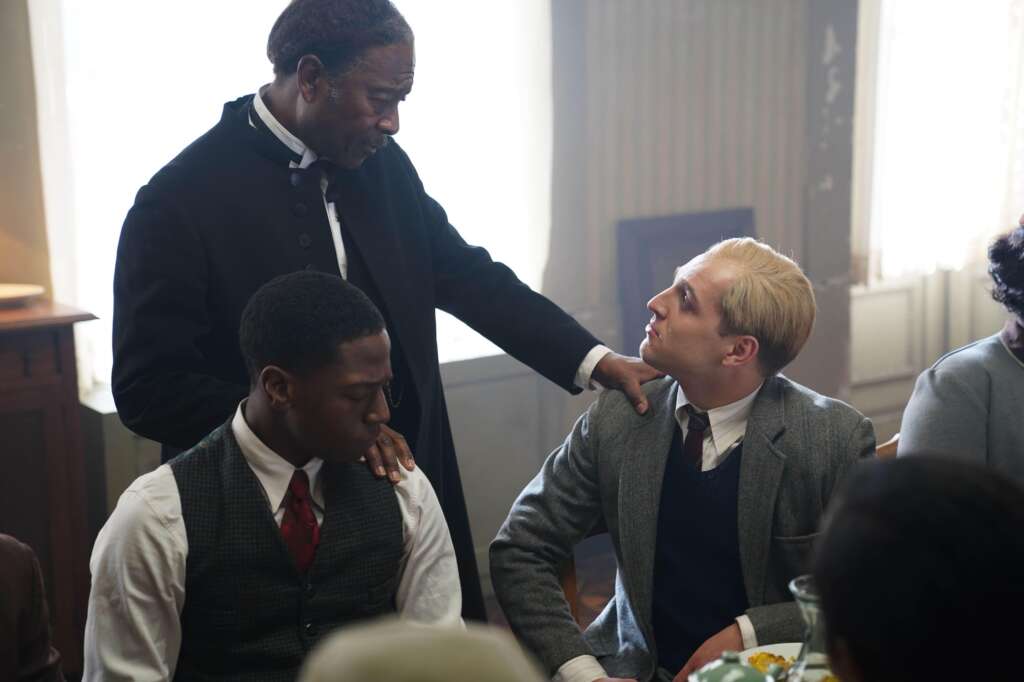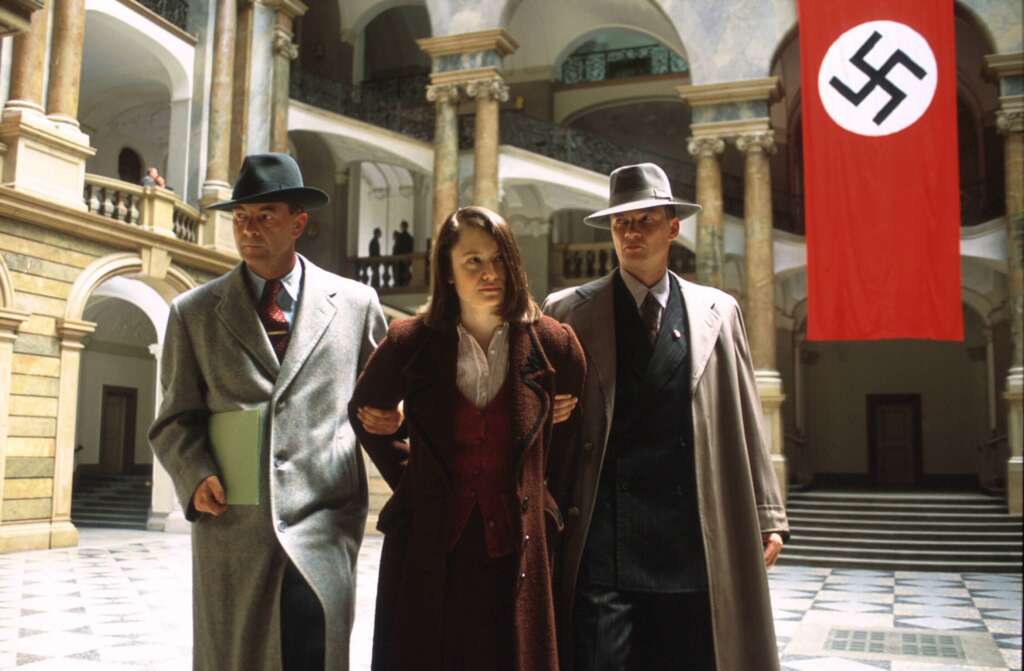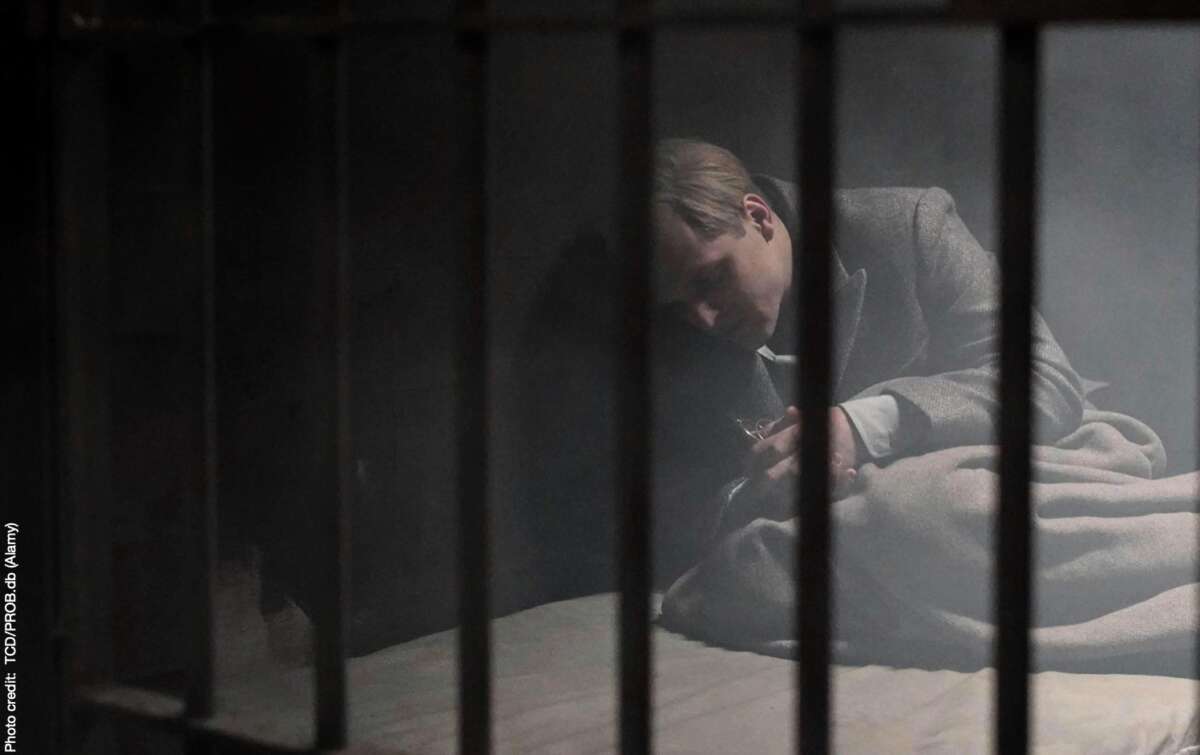For my biography of Deitrich Bonhoeffer, please click here.
This movie centers on a famous pastor who lived in Germany’s golden age known as the Third Reich (or Realm.) The previous two Reich’s, according to the Nazis, were the Holy Roman Empire and the half century or so of the German Empire ending with the conclusion of World War I.
Acting was good, and most of the film was shot in Ireland. Period effects were as expected. It was over all enjoyable–if not tense–to watch.
This film was released last Autumn and it has generated a good deal of controversy from across the political and religious spectrum. I’m not sure how much of the promo is coy or whether things are actually not as they seem. I do know that most of the cast are concerned that Christian nationalists are using the movie to support their political agenda. You can–and should–read the letter here. Reaction from the Bonhoeffer family can also be found on that website.
There were some disturbing parts of the movie for me because I questioned the accuracy of what was being portrayed. First of all, there is no historical indication (at least that I am aware of) that Bonhoeffer ever supported the assassination of Adolph Hitler, yet alone participated in it. Nor am I aware of any New Testament suggestion that it is okay to harm your national leader (or anyone, for that matter) in times of trouble. And that includes doctors who perform abortions, because this has been tried before in the U.S. under the same guise of saving lives. The utilitarian notion that “the end justifies the means” seems to be absent in all that I’ve read about Bonhoeffer through the years, and it should not creep into our faith today. So, it was disturbing for me to hear the actor (Jonas Dassler) portraying Bonhoeffer to shout “Heil Hitler!” in order to ingratiate himself with the Schutzstaffel (SS) or was it the Gestapo? There seemed to be some confusion or artistic license about the March 21, 1943 attempted assassination of Hitler by Rudolf Gersdorff and the July 24, 1944 bombing by Claus von Stauffenberg. And, the ending of the movie when Bonhoeffer was executed was not strictly historically faithful. The movie hops about forward and backward in time as many biopics do nowadays, and that can be confusing to someone unfamiliar with Bonhoeffer. I know it was for me.
However, the film does have its touching moments, particularly as Bonhoeffer held communion with fellow prisoners shortly before their death, including a friendly SS guard in their company. The movie also accurately (more or less) portrayed the rapport Bonhoeffer had with the black community in New York City, and Bonhoeffer’s love of jazz while he studied at Union Theological Seminary. In these scenes, the viewer was exposed to a bit of the Harlem Renaissance which ended circa 1937.

Bonhoeffer had a complex personality, and it is hard to pin him down with certainty and say “this is how he was.” For that reason, it is easy for someone almost a century later to “pick and choose” a particular character trait or theological facet and run with it (to the exclusion of other traits and facets.) A good critique of director Todd Komarnicki’s approach can be found here. Komarnicki has directed other popular films including Elf, Sully, Perfect Stranger.
To a typical Cinephile, the similarity between Germany in Bonhoeffer’s early years and America, today, is unescapable. The German Protestant Church Confederation then (as the evangelical church is now in America) was split between those churches who endorsed and supported their Führer and those who saw the danger of the Church getting caught up in partisan politics and fascism. This is happening in America today (witness the Executive Orders signed in just in the last few days: February 6th “Eradicating Anti-Christian Bias” and February 7th “Establishment of the White House Faith Office.“) The Reichkirche even had their own Bible. The State of Oklahoma recently and apparently made a similar attempt to incorporate thousands of copies of the Trump Bible in their public school curricula as mentioned here in my blog.
Komarnicki has been accused of manipulating the audiences towards a certain political conclusion. Some say it is to make the anti-government elements now, as then, to appear to be equally fanatic and dangerous as well, willing to resort to violence such as what we saw in Butler, PA last summer. Other says that the movie is biased in the sense that it warns audiences that fascism “can, in fact, happen here.”
You will have to decide for yourself.
If you liked this movie, you might also enjoy Sophie Scholl: The Final Days. See trailer here. My review of the movie is available here.





